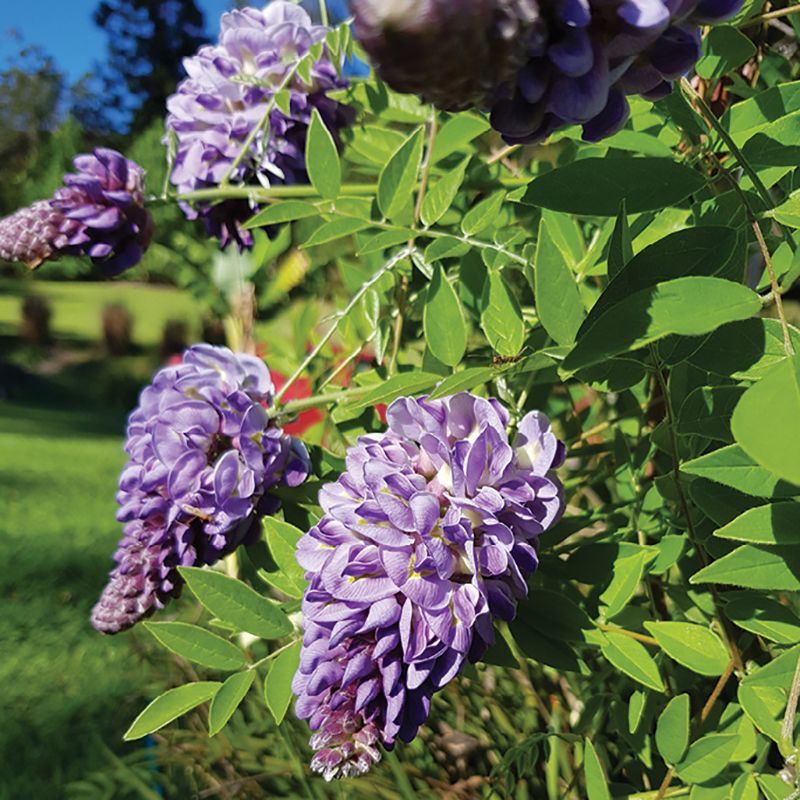Native wisteria offers swoon-worthy blooms without an invasive growth habit

Wisteria frutescens is native to the Southeastern United States.
Long overshadowed by its showier, grabbier relations, American wisteria (Wisteria frutescens) is enjoying a revival. Reputable nurseries have weeded the aggressive Asian species from their shelves, and “native” has become a buzzword as gardeners recognize that indigenous plants nurture the ecosystem.
Matt Johnson, president of the Lowcountry Chapter of the South Carolina Native Plant Society, readily admits that “the blossoms of American wisteria are smaller and not as fragrant.” But the vine’s growth is also more subdued: it’ll keep to arbors, trellises, and fences, serving as a host plant for butterflies and moths.
First blossoming from May to June, frutescens may put on a second show in late summer. The hot cultivar, ‘Amethyst Falls’, is particularly reliable in this department.
Ultimately, Johnson says, “American wisteria delivers the benefits of the Asian varieties, plus some.” Find it at the Native Plant Society’s March 27 market (scnps.org), as well as nurseries including Roots and Shoots.
The Basics: Wisteria frutescens